'Cold Hawaii': Denmark's unlikely surf town where old-school fishermen and surfers live in harmony
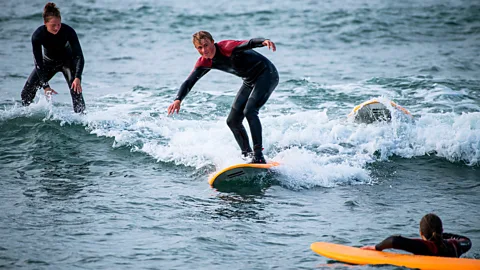 Getty Images
Getty ImagesKlitmøller has been transformed from a fishing village into a buzzing and gnarly surf spot, where newcomers are welcomed to join Cold Hawaii's growing community of transplants.
By the time Mai Knudsen was 33, she was a civil engineer at the top of her game. She'd "made it" by most definitions of success – except her own. "Work was so stressful," she said. "I was spending my weekends doing nothing just to cope before going back on Monday. I felt my life should be different."
One visit to the town of Klitmøller in north-west Denmark was all it took. She traded her demanding life in Copenhagen for a seaside home overlooking dunes and surf, turning the first floor of her house into the pancake cafe she'd always dreamt of owning. Ten years later, in this old fishing village now known as "Cold Hawaii", Knudsen runs Kesses Hus for half the year, and in the wintery off-season she closes the shop to surf.
"I knew I could really live here," she said.
Knudsen is among Cold Hawaii's growing community of transplants, most of whom left skyscrapers and traffic to slow down and surf by the sea. Denmark's once sleepy north-west coast is now crawling with galleries and boutiques, organic bakeries and a co-working space – many of them opened by the newcomers from 20-some-odd countries. Even more young South Africans, Brazilians, Australians and Germans moved here post-Covid to work remotely, some to raise their kids. There are doctors and lawyers, and a famous Danish artist who'd been living in Berlin, Jeppe Hein, who now volunteers in local schools teaching children how to paint their own breath.
"You're forced to slow down. There isn't a lot here, so if you want art, you make it yourself. If you want pancakes, you make them yourself," said Knudsen. "That part hasn't changed. It's still the mentality of the fishermen who've lived here the longest."
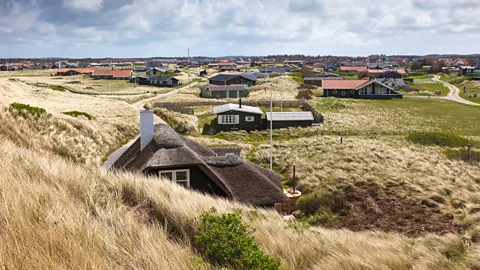 Getty Images
Getty ImagesI also fell in love with Cold Hawaii last autumn, despite being dragged face first through giant waves in one of its 31 famous surfing spots along a reef made of sturdy flint and chalk. North-east and southern whipping winds met at the crests of waves, forming swells all year long for what many call Europe's best surfing.
"My job is to teach people from all over the world to surf, to be on the ocean and to guide them to find themselves again," said my surf instructor Vahine Itchner, who relocated to Klitmøller 15 years ago from Tahiti and now owns Cold Hawaii Surf Camp with her Israeli husband. "It feels like we're on a holiday."
I walked along the waterfront, past chatty barefoot 20-somethings with salty manes and shortboards still strapped to their ankles. The classic scenes of fishing boats trawling peacefully in the harbour alone could have convinced me to stay. Even more enticing though was the cultural movement behind this creative and somewhat unlikely bond between fishermen and surfers, who put their differences behind them to save their community.
When the surfers arrived in the 1980s, Klitmøller was a ghost town. This once-vibrant fishing village had been the major trading and fishing port between Denmark and Norway, but when the port was moved to nearby industrial Hanstholm Harbour in 1967, businesses closed and families who had lived here for hundreds of years packed up and moved away.
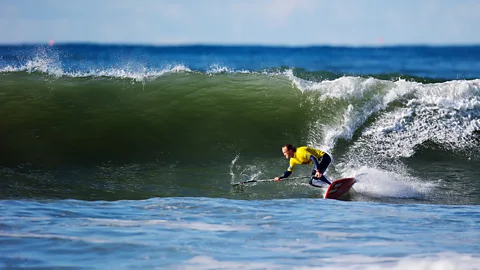 John Charter
John Charter"There were very few of us left," says Preben Toft Holler, an angler from one of Klitmøller's multigenerational families of fishermen and seafarers, who's lived here since 1965.
With no work and few residents, hope for the town's recovery was waning. However, in the 1980s, Klitmøller's fate changed. At the start of the decade, a German windsurfer named Christian Dach accidentally stumbled upon Klitmøller's wild waves. He brought his friends here to surf and word of its long reef breaks began to spread.
By 1994, a windsurfing documentary described the area "like Hawaii, just colder", bringing surfers from all over the world. The secret of its epic wind, waves and kite surfing was out – but the town, mostly made up of older fishermen, was nowhere near prepared for a flood of young surfers sleeping in their buses on the road and bringing no economic return.
Five more under-the-radar surfing spots
Cape Town, South Africa - Head to this outdoor oasis in the southern hemisphere to ride under epic views of Table Mountain.
Munich, Germany - Hundreds of miles from the coastline, river surfing started here on the Eisbach River in the 1970s.
Skeleton Bay, Namibia - In this remote location surrounded by nature conservancies, the Benguela Current delivers big surf south of Angola on the Atlantic Ocean.
Lofoten Islands, Norway - Brave the summer Arctic waters for big swells on the archipelago; you may even catch the Northern Lights.
Hiriketiya Beach, Sri Lanka - Surf any time of year in this horseshoe-shaped bay on the south coast. The water is clear, the waves are huge and monkeys are swinging from the nearby trees.
"The surfers were younger, looked different and behaved very differently. They crowded the place and contributed very little," said Rasmus Johnsen, a surfer with a philosophy degree who moved to Cold Hawaii from Odense, Denmark in 2005.
So, in 1997, Toft Holler became chairman of a local committee to attract new residents that could rebuild the town. Eight years later, when he first arrived, Johnsen took the reins and came up with a plan for the surfers and fishermen to peacefully coexist.
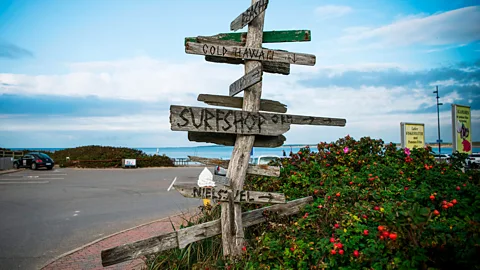 Getty Images
Getty ImagesJohnsen worked with the mayor to help the newcomers open surf schools and rental shops so they could contribute to the town. He put Cold Hawaii on the international surf community's map by hosting World Cup competitions and convincing the mayor to make the coastline more accessible to watersports.
And maybe most importantly, he, Toft Holler and others worked tirelessly to improve the dialogue between surfers and local fishermen so this little seaside community could once again live in harmony – only looking slightly different. The town, Johnsen said, would otherwise be "in total decline".
It quickly turned out the two groups had more in common than they thought: a love for being on the water in nature away from the noise. Without each other, they realised, neither would be living in Klitmøller. There would be no Cold Hawaii. Together, the two groups built new homes and businesses to revive the seaside community and surf and fish.
"One of the big things that changed the attitude towards surfers was when our grandchildren started to surf and a union was established for the surfers so we all could meet and have a dialogue and [it turned out] a party," recalled Toft Holler, who's now training Denmark's new fishermen at nearby North Sea College in hopes of securing a future for the fishing community.
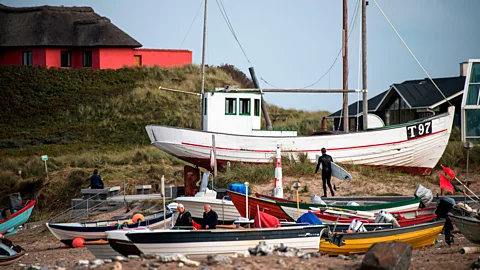 Getty Images
Getty ImagesAnd, he added, those younger fishermen from the old-time families who left for Hanstholm Harbour more than 50 years ago? They're also returning to Cold Hawaii to fish and raise their families where their parents raised them.
In fact, as people continue to leave major cities for more rural areas, Cold Hawaii has only grown and now includes the area north from Hanstholm Harbour through the rolling seas, sand and sedge of Thy National Park to the town of Agger. Those descendants of the fishermen and merchant mariners who lived here for so long are happy to welcome outsiders into their town again.
"Even hundreds of years ago, people here weren't afraid of outsiders. Many knew – with all the timber and the food going back and forth to Norway – like we know now, that allowing foreigners could be a good thing," said Knudson. "It meant business growth and wealth."
Today, the town is buzzing with people of all ages speaking all languages; traditional fishermen, carefree surfers and curious tourists come together on the boardwalk. You can feel the town's fishing past in the salty air. Klitmøller's surf club is in an old lobster house; the trendy sauna club on the beach was created by fishermen's wives who like swimming in the winter. When an old stable isn't used for storing boats and gutting fish, there's seasonal parties, jazz concerts and film screenings – it's also where Knudsen practices yoga.
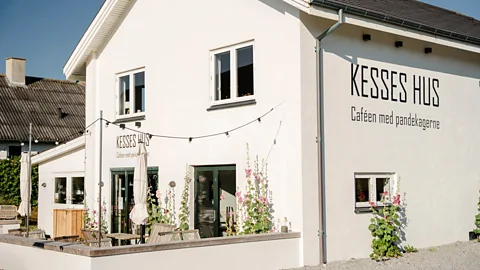 Kesses Hus
Kesses Hus"Over the past two decades, Cold Hawaii has been an inspiration for rural areas throughout Denmark," said Johnsen. The population has grown from 800 in the year 2000 to about 1,300, and tourism is booming.
More like this:
• The Danish tradition we all need now
• The best beaches to catch a wave in LA, according to pro surfer Courtney Conlogue
"The fishermen are very involved in everything here. We all like seeing it look nice down at the water. Everybody's really good at taking care of each other," added Knudsen. "It's in our best interest."
She told me she loves it when the fishermen stop by with a bag of extra mackerel for Kesses Hus – it's a good excuse to chat with them about boats over an order of pancakes.
After devouring a savoury galette from Kesses Hus, Knudsen and I climbed her stairs to the roof deck she built herself right after she moved in – she's a civil engineer, after all. "I named my cafe Kesses," she told me, after the late ship builder who originally built the house in 1962.
"If you buy a home here in Cold Hawaii, you may own it, but it's not officially yours until you move away," she added, explaining that houses here are named in honour of their previous owners. "It's our town's tradition."
Gazing out at the cobalt sea on the horizon, I asked her when she thinks that will be. "When I'm too old to do the pancakes," she answered. "I'll be here forever."
--
If you liked this story, sign up for The Essential List newsletter – a handpicked selection of features, videos and can't-miss news, delivered to your inbox twice a week.
